

What you might have yet to hear is that the queue length to play the game at Ubisoft's European DigiDays event clocked in at two and half hours - and that queue remained at least ten people deep for the duration of the six-hour event. This wasn't a consumer show either, but a press-only event.
It's a situation that's more due to event mismanagement, cramming only four demo pods - each with nearly a quarter of an hour of game time - into a tiny booth with only one door serving as both entrance and exit.
But the popularity isn't faked. Child of Light - a 2D puzzle-platformer with turned-based combat and a vivid watercolour design - was star of the show, and by the looks of reactions online, it's already one of the most popular digital titles Ubisoft have. Bizarrely, for a title with such an indie vibe, the last game its lead writer was involved in was Far Cry 3.
We last ran into Jeffrey Yohalem at a hands-on event for his previous game last year. Shifting from an adult first-person shooter to a celebration of fairytales and poetry seems like a huge transition. According to Yohalem however, the two projects have much more in common than you'd think.
"They're both coming of age stories... I'm fascinated by these moments when extreme change happens in your life, when you go from being young to losing your innocence and becoming an adult.
"[The main character] Aurora is going through a similar change - she starts the game as a young child, then as a player you level her, and she changes and grows. She goes through a huge transformation."
Aurora is an 19th Century Austrian Duke's daughter, who awakens one day to find herself on a lost continent, and on her search for a way home "has to find the sun, moon and stars" which have been stolen by a witch of the night, and is joined on her journey by a glowing firefly named Igniculus.
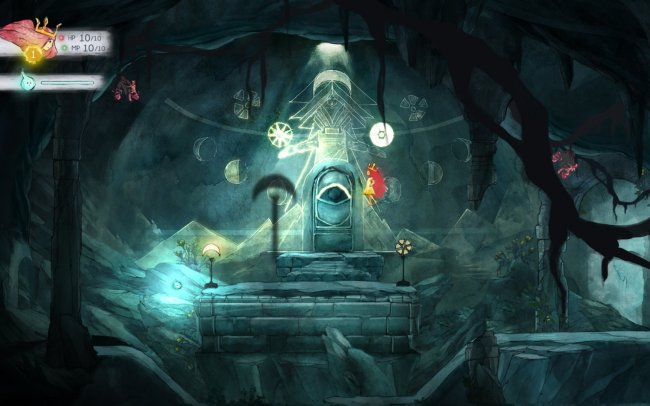
A digital release due out on every major platform, the game can be played either solo, with the player switching between the two with a button tap, or as same-screen co-op, with the team actively avoiding online cooperative, as they wanted players - families - to share the adventure together ("everytime we made a decision for this game, it was about what would make the game better, not what's going to make us interesting from a marketing perspective", says Jeff.) There is some online functionality, with players able to scrawl glowing notes that'll appear in friends' games.
The game circles the puzzle, platformer, adventure and JRPG genres, but its story is built to play out like an epic poem, much like Rime of the Ancient Mariner or Beowulf.
"In college I did a lot of poetry, and if you'd asked me then would I be writing an epic poem for a pop medium I'd have said 'are you kidding?'," laughs Jeffery. "Poetry has gone the way of opera, were it's for a select small group... everyone else is like 'who cares', right?"
Despite the beautiful hue of the visuals, the writer emphasises Child of Light isn't a children's tale, referencing Bambi-era Disney. "It's a ballad; it's not childish, it's not about every line rhyming everything in a cute way - it drives the action forward." Though the comparison may suggest a spiral into darker subject matter, Jeffery is adamant that the title indicates there is hope. "It's an optimistic story. the idea is not to go into darkness - it's just to be real."
But structuring the game to flow like a poetic saga was a headache in itself, with Jeff spending "about six months" working on the script. "It's very much like mosaic tile work; painting for me is how I'd describe writing - you do a big dramatic scene with a lot of energy in it, you feel it as the writer. In contrast, writing Child of Light is almost like you're setting... each scene becomes a puzzle."
Puzzles and battlefield strategy feed into the idea that this is as much a modern ode to the classic JRPG genre as Grimm fairytales (Jeffery name-drops Chrono Trigger and Final Fantasy VI), as we see from our hands-on.
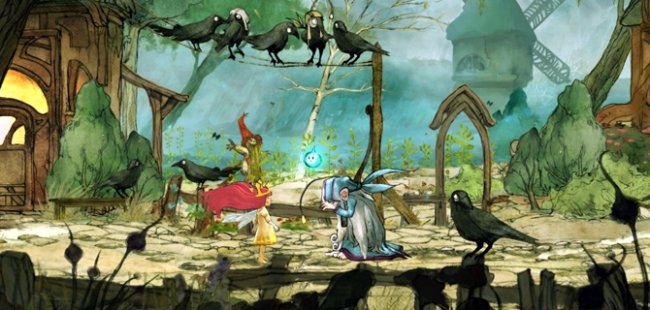
The demo takes places in Act 2 of the game. Aurora and her floating companion start out in a village, its residents turned to crows. You can explore houses, open chests for stat-enhancing crystals. We pick up a second party member, and we're soon descending into a labyrinth cavern, by way of the village well, exploring tunnels and tackling creatures.
We're playing on PS4, and the controller in-built lights suddenly make sense, as one's illuminated blue, the other red to signify which controls who.
Aurora (red) can float as well as jump, flying about the caverns freely, with a trigger tap giving her a temporary speed boost - perfect for dodging past large spikes that lunge out of the darkness as we travel along tunnels.
Ignilculus isn't limited to traditional paths. Much like a mouse cursor, the firefly is free is float anywhere on screen, collecting mana and illuminating secret paths hidden in shadow. His glow plays an important part in the game's battle system - which even at this early stage shows the developers have thought of new tricks for age-old gameplay mechanics.
Like any RPG, when you touch an enemy you enter a turn-based battle. Along the bottom of the screen is a charge bar, with the last eighth daubed in red. All characters on screen, Igniculus aside, are iconised on this this bar, icons travelling from left to right. When a character's icon hits the red area, they're allowed to cast or attack.
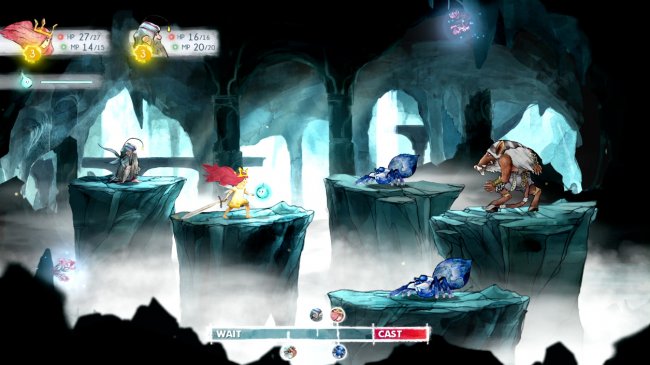
Different attacks or magic spells may take longer to charge, slowing that movement. Whoever controls Igniculus can blind enemies by floating over them, slowing their casting ability, or alternatively if the firefly hovers over a player character, it can offer a slow HP increase.
If you attack an enemy as their icon is in the red section as well, you cancel their attack. the result is that, beautifully designed though these screens and the characters on it are, your focus is fixated on the bar and manipulating timings to your advantage. We don't quite master it come the demo's end boss fight - a multi-tenacled lake monster than swiftly kills the party. We're told by another team member that the difficulty is being tweaked.
We had fair warning anyway: another player had left a glowing message prior to the boss stating that we should grind some battles and get ourselves up to Level 4. Battles grant XP,which can be spent on multi-branching skill trees, offering shorter cast times, more powerful attacks, or heal spells upgraded from individual healing to party-wide.
With the game powered by UbiArt Framework engine - the same that gave Rayman Origins and Legends their unique look - the game already looks fabulous, and it looks like concept artists might finally get their due, porting their paintings direct to the game. Gameplay is an interesting mix and has potentially enough depth to make it as enticing as it looks. And yet, it seems the story is going to be the real punch to the gut when the game comes out next year. As Jeffrey Yohalem concludes: "You're going to go through life - it's that kind of epic".

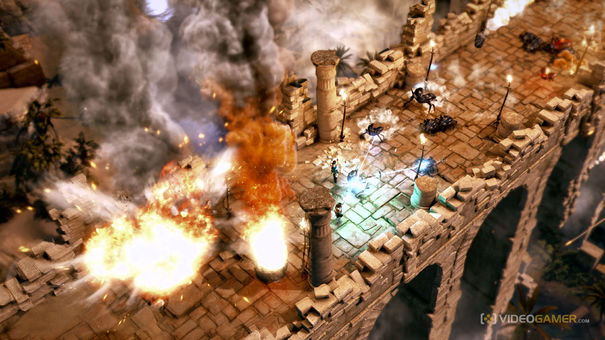
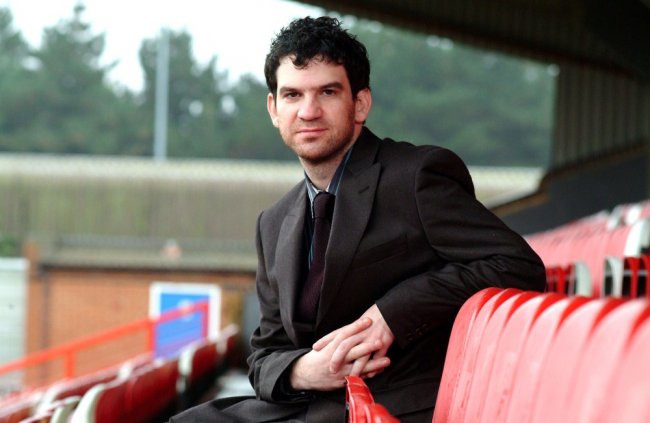

 Minecraft water temple seed list 1.8 - 1.8.1(8 ocean monuments)
Minecraft water temple seed list 1.8 - 1.8.1(8 ocean monuments) Elder Scrolls V: Skyrim Prophet Quest Guide - GamersHeroes
Elder Scrolls V: Skyrim Prophet Quest Guide - GamersHeroes Torchlight 2: Tank Support Outlander Build Guide
Torchlight 2: Tank Support Outlander Build Guide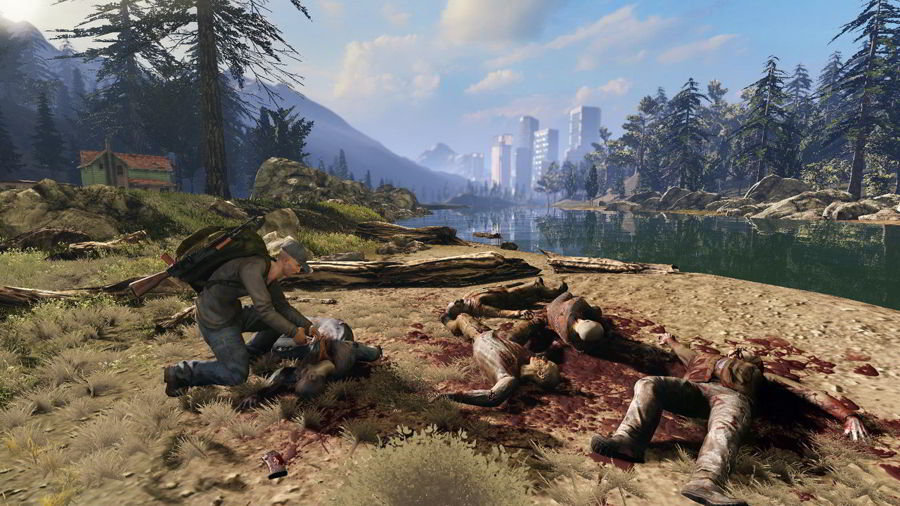 The War Z Zombie Survival Guide
The War Z Zombie Survival Guide Sleeping Dogs Amanda Mission Walkthrough - GamersHeroes
Sleeping Dogs Amanda Mission Walkthrough - GamersHeroes